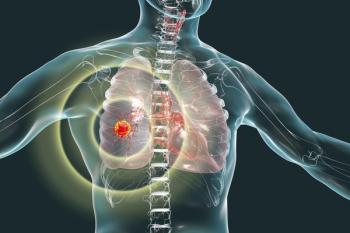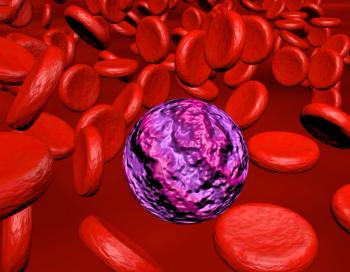
Person-First Language May Mitigate Stigmatization in Lung Cancer Screening
Notions of blame around smoking may be a prominent factor in patients with lung cancer feeling stigmatized for developing their disease, according to Lisa Carter-Bawa PhD, MPH, APRN, ANP-C, FAAN.
It is crucial to use person-first language to reduce potential feelings of stigmatization around lung cancer diagnoses and ensure that patients are receiving equitable treatment across the board, according to Lisa Carter-Bawa PhD, MPH, APRN, ANP-C, FAAN.
In a conversation with CancerNetwork®, Carter-Bawa, director of the Cancer Prevention Precision Control Institute at the Hackensack Meridian Health Center for Discovery and Innovation, spoke about the prominent factors that may contribute to the stigmatization of lung cancer and thereby impact an individual’s decision to screen for potential disease. For example, she described how the act of smoking may instill feelings of blame and shame surrounding a lung cancer diagnosis and stated that avoiding the use of terms such as “smoker” in clinical communication may mitigate this stigmatization.
Transcript:
The most prominent factor boils down to blame and shame around smoking. Whether it is an underlying tone or message toward an individual or, very frankly, a blatant use of language to blame someone in the context of lung cancer. To give you an example, a person’s diagnosed with lung cancer and shares a diagnosis with a friend. The immediate response from the friend is saying something like, "I didn’t know you smoked." Somehow that act of smoking equates to deserving a deadly disease like lung cancer.
The point is that hearing that someone has lung cancer somehow automatically spurs the response that equates to blaming them for having the disease. This kind of public discourse around lung cancer has seeped into not just individuals diagnosed with lung cancer but backing it up to lung cancer screening with the same shame and blame feelings. Those are the prominent factors that contribute to feeling stigmatized.
I would love for my colleagues to take away envisioning a world where stigma in lung cancer doesn’t exist—that it’s just a historical blip that we look back on—and that we are treating people equitably across the board. [Where] we’re using person-first language and not referring to people as smoker and non-smoker in our scientific communication, our medical communication, or layman communications. That’s the biggest thing I would like colleagues to take away from this.
Newsletter
Stay up to date on recent advances in the multidisciplinary approach to cancer.


















































































